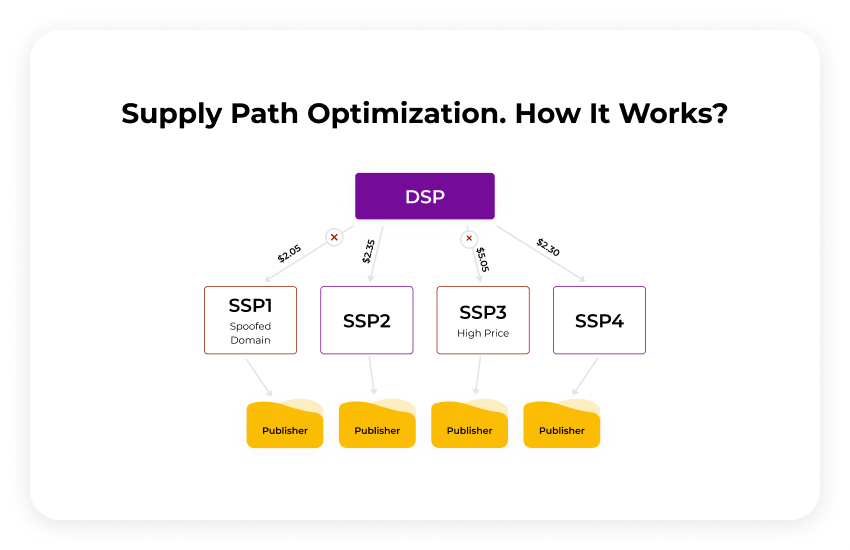Over the past decade, digital transformation influenced almost every aspect of our everyday lives. With each year, new trends emerge and CEOs from various areas join the race to get the most cutting-edge technologies on their side. Not only should they identify the right trends and the good timing for their deployment, but also they should know how to apply them in right.
We know how important it is to set the right course of action, so in this article, we are going to uncover some of the newest digital transformation trends and explore how CEOs can introduce those to their businesses.
1. Data and privacy
The trend:
With the introduction of GDPR and CCPA regulation privacy laws, many brands have already faced hardships with the usage of third-party cookies during this transition to the new privacy-centered digital world. The good news, however, is that they still can use first-party data and this model can become even more beneficial. First-party data is becoming more valuable with each introduction of new policies regarding privacy, so it is important to get to know your audience as soon as possible.
In practice:
To make the most out of first-party data, one should start gathering it. This can be achieved by using direct-to-consumer campaigns that gather sign-up info via apps and websites. The collected information can be then integrated into CRM platforms to build successful communication strategies with your clients. It can also be added to the CDP or DMP to get additional revenue from programmatic advertising.
In the data-management platforms, you can store your first-party data and at the same time comply with CCPA and GDPR regulations. The DMP allows you to understand your audience better, serve personalized content to your customers, and make media buys based on the information you’ve gathered.
2. Blockchain
The trend:
Blockchain is a relatively new digital technology that can be defined as a collection of data records distributed and secured cryptographically within a computer network, but not owned by any single one of them. Blockchain has already proved to be useful in intellectual property protection, real estate management, food, drug safety, and programmatic buying.
In 2020 the technology penetrates more and more industries, as global tech giants such as Amazon, Samsung, Microsoft, are turning to blockchain-powered platforms and services. The usage of blockchain is especially beneficial for ad tech, as it significantly helps to avoid fraud since smart contracts identify fake clicks and impressions. Safety is a very nature of blockchain - every action is stored in decentralized ledger that cannot be changed. Because of this, all the information is easy to track and verify by any member of the blockchain ad network.
In practice:
For ad tech blockchain it is a perfect tool that enables the creation of a fraud-free programmatic ecosystem, transparent and secure for everyone. To explore it yourself, you may want to try one of advertising blockchain solutions, like DSP, SSP or Ad Exchange. By introducing these platforms to your business, you can enjoy the benefits of programmatic advertising without having to worry about security, safety, and transparency.
3. SPO
The trend:
SPO or supply-path optimization has been around for a while already, but there’s still a way to go. In general, it is an algorithm integrated to the DSPs which helps to navigate around SSP partners by choosing the best bids according to specific parameters. This helps to build more efficient relationships between advertisers and publishers while decreasing ad spend in some areas.
The key mission of SPO is to make a clear path between demand and supply sides without huge crowds of middlemen. A nicely-done SPO algorithm analyzes SSP’s traffic, partners, win patterns and other parameters to create the best tactics and avoid “bad actors”. This is also a good tool for checking inventory quality and pricing.
In practice:
By using SPO advertisers can focus only on most beneficial bids while publishers can still reach the highest revenues. The feature is easy to implement, as it is often available as an additional feature of the demand-side platform, which analyses partners in real-time and chooses the shortest paths to the best deals.

4. Diversification with White Label
The trend:
Another focal point in digital transformations now is diversification. As marketers are starting to understand customers better, it becomes clear that clients want diverse experiences and content. The adoption of new channels will strengthen your brand and will help you to reach more people.
A more specific manifestation of this trend is omnichannel marketing - a strategy that includes marketing on multiple platforms and establishes a consistent brand image and customer experience. Using three or more channels can get you a 250% higher purchase frequency compared to single-channeled campaigns.
Diversification is also good for your business strategically, as it allows you to switch focus, depending on areas of business. For example, according to Emarketer, by 2021 more almost 88% of all US display ad spend will be programmatic, so an in-house programmatic platform can serve as a nice addition to your revenue.
Of course, at first, it seems not so easy to launch a new platform from scratch, especially in a short amount of time. This problem can be solved with white labeled solutions. With white label, one can create a unique programmatic platform with an opportunity to integrate trusted partners of your choice. This way you can specialize on specific types of traffic and make your platform even more valuable on the market.
In practice:
If your intention is to get new digital technology and diversify effortlessly, you need a white label solution. Our offer includes a number of white label programmatic solutions for every part of the programmatic ecosystem, such as white label DSP, white label SSP, as well white label Ad Exchange - a full-stack customizable RTB open marketplace.
Conclusions
By keeping up with digital transformation trends you can make smart business choices in time. New privacy legislation, as well as blockchain and SPO developments, are among the most important directions to watch for in 2020. As businesses tend to diversify, a useful tool to create a customizable programmatic platform is white-label, which can significantly save your time and effort. By using our white label ad exchange - SmartHub, you can manage your own RTB ad network with precise targeting options and professional support team.




